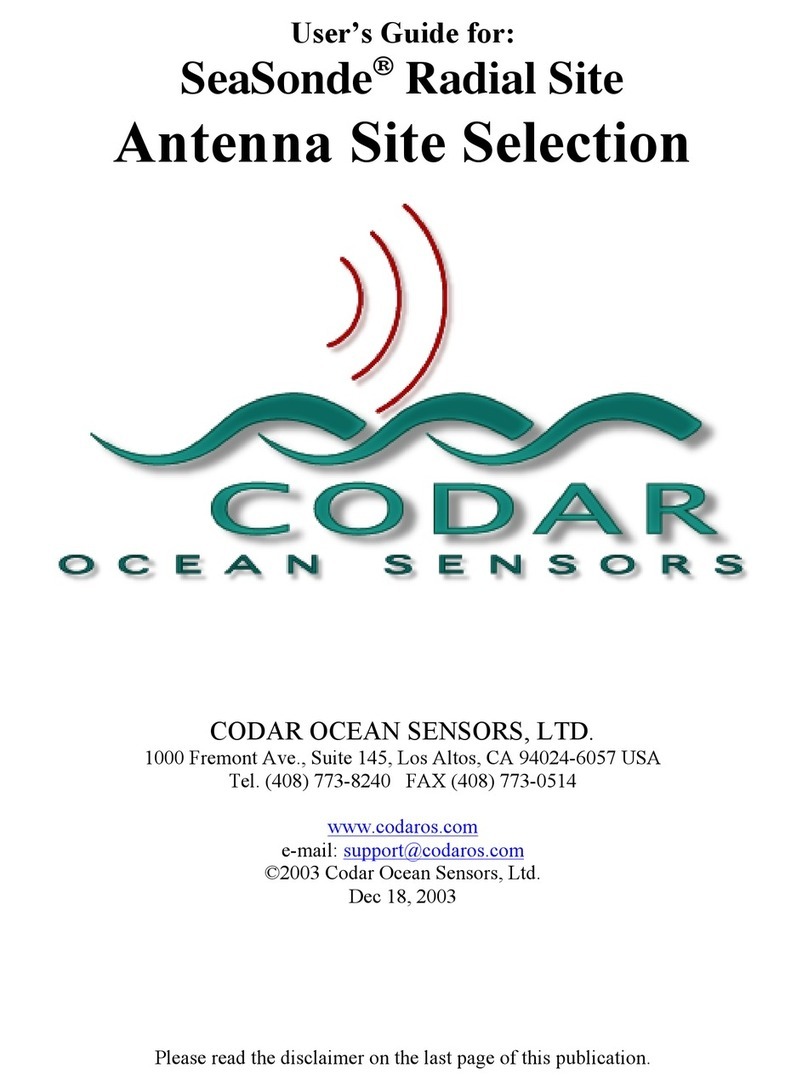
justments and to ease installation. Account for any other reductions in distance imposed
by the cable route.
Animals (rodents in particular) can gnaw through cables. Plan to avoid this potential
damage. Covering the cable with plastic split loom tubing (1/2 inch nominal size) is an
inexpensive way to protect the cable. Running the cable through conduit is also an op-
tion. Conduit can be buried. Schedule 40 PVC pipe can be used as conduit.
People should not touch the antenna or risk tripping over the wires on the ground that
radiate in a semicircle from the base of the antenna. Consider a non-metallic fence,
markers and/or signage, especially if the site is accessible to the public. A minimum
keep-out area is a 7 m radius circle centered at the antenna.
Plan how to support the antenna. Antenna support depends on the characteristics of the
site. If the siteʼs soil can be excavated, it is common to use a reinforced-concrete in-
ground pier. Plans for such a pier are included in this guide. A drawing of the antenna
feed is also included and shows the mounting bolt hole pattern. For temporary or short-
term installations, the antenna can be bolted to a sturdy plywood base (not supplied),
which sits on the ground, and stabilized with guy ropes. The base should be 0.75 - 1 m
in diameter or square, with four holes drilled in the center and matching the antenna
feed bolt hole pattern.
Decide whether guy ropes will be needed. If the support is very stable (for example, a
concrete pier), guy ropes are not needed. Guy ropes should be made of non-conductive
material. Do not use metal guy wire or cable. For long-term installations, Kevlar rope
with UV-resistant outer braid is recommended. To reduce cost, nylon can be used for
short-term installations. If guy ropes are needed, plan how they will be anchored. Sim-
ple or cork screw stakes are commonly used. Metal stakes can be used. Determine the
required length. Guy ropes and stakes are not provided with the transmit antenna and
must be procured separately.
Inventory
If the installation site is remote, a missing part or tool will delay the installation. Ensure
that you have all the required parts, tools and support equipment before departure.
Checklists are provided in this guide.
Pack a clean work surface in your field kit. A piece of cardboard, paper, or cloth will
work. The surface will be placed under threaded antenna parts to keep them clean. In
addition, many small parts are used to assemble the antenna. The small parts are diffi-
cult to find if dropped in grass or dirt. A surface under the work area makes it easy to
find dropped items.
Include spare fasteners in your field kit, in case any are lost. Spare fasteners must be
made of the material specified in the checklists. In particular, do not replace stainless
steel parts with non-stainless steel.
!5




























